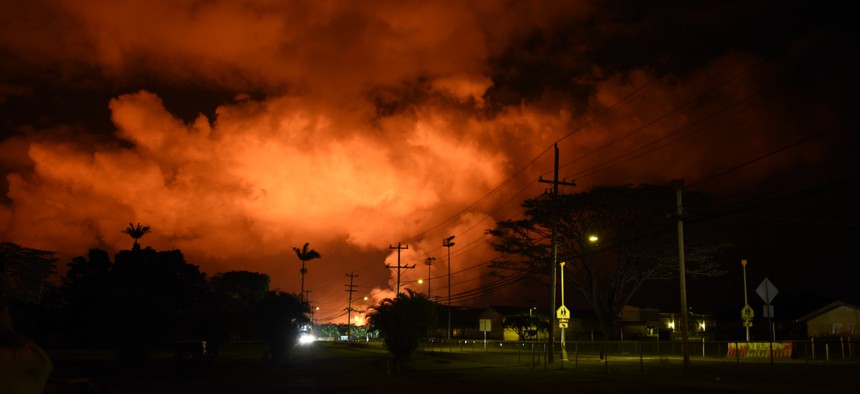Evacuation Center Needs Time to Recover From Disaster Recovery

New lava flows from a recently formed volcanic fissure near the town of Pahōa, Hawaii. Shutterstock

Connecting state and local government leaders
Hundreds of Kīlauea lavaflow evacuees ended up at a recently built rec center on the Big Island. Now it needs to close for months of repairs.
In a year full of disasters across the U.S.—which includes powerful hurricanes in the Carolinas and Florida, record-setting wildfires in California and elsewhere across the West, a major earthquake near Anchorage, and destructive flash floods in places like Ellicott City, Maryland—you might be forgiven if you’ve forgotten about the destructive lavaflows that broke through newly formed vents near the Kīlauea volcano starting in May.
People living on the Big Island of Hawaii certainly haven’t forgotten the oozing fiery disaster that destroyed more than 700 homes in Puna-area subdivisions like Leilani Estates and Lanapuni Gardens over the course of several weeks.
Thousands living in or near Kīlauea’s East Rift Zone were evacuated to safer locations away from the lavaflows, which buried communities and changed the shape of the coastline of the southeastern part of the Big Island.
More than 500 of those evacuees ended up at Pahōa District Park, a 29-acre recreation complex that opened in 2016. Although the parks and recreation complex in Pahōa shut down as a shelter in September, it will be closed for 13 months for $1.35 million in renovation work. Hawaii County needs the time to repair “damage that occurred to the gym and fields during less than five months of use as a shelter,” Civil Beat reported this week.
Among the damage: Despite the use of bacterial disinfectants, inspections have found mold that can’t easily be removed; ground surfaces deteriorated or damaged by urination; hundreds of metal tent poles now embedded in the ground; and strands of volcanic glass that damaged the park's swimming pool filtration system, according to Civil Beat.
The good news on the Big Island amid the ongoing complexities of securing housing after the disaster: After Kīlauea’s lava inundation earlier this year, the situation may be quieting down around the shield volcano.
As CNN reported this week, volcanologists believe that eruptive activity at Kīlauea has stopped for the first time since 1983. An important thing to note: that doesn’t mean future volcanic activity won’t happen in the future at Kīlauea.
Michael Grass is Executive Editor of Route Fifty and is based in Seattle.

NEXT STORY: Measuring Results of Early Childhood Spending





